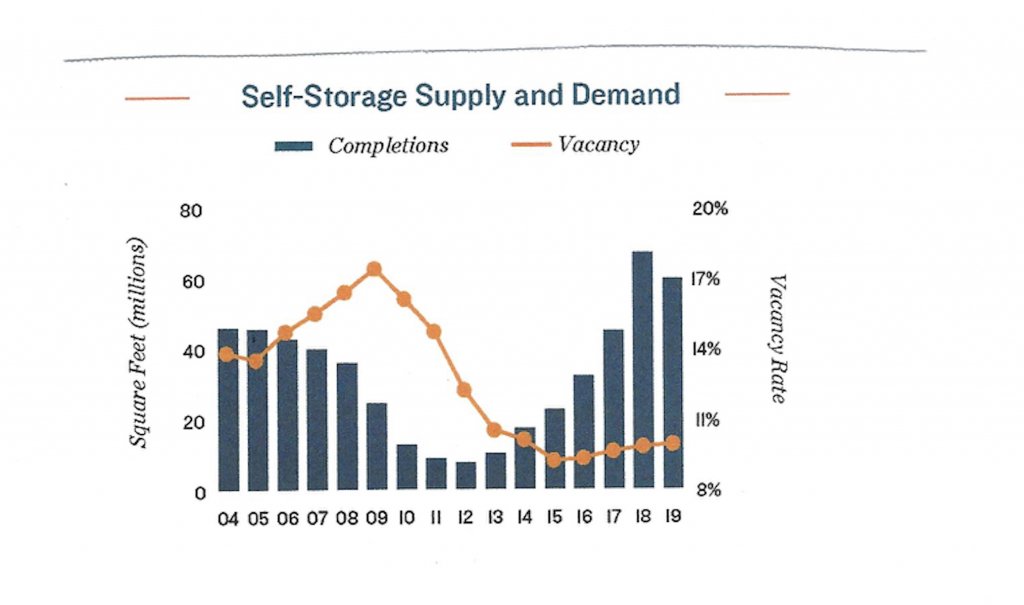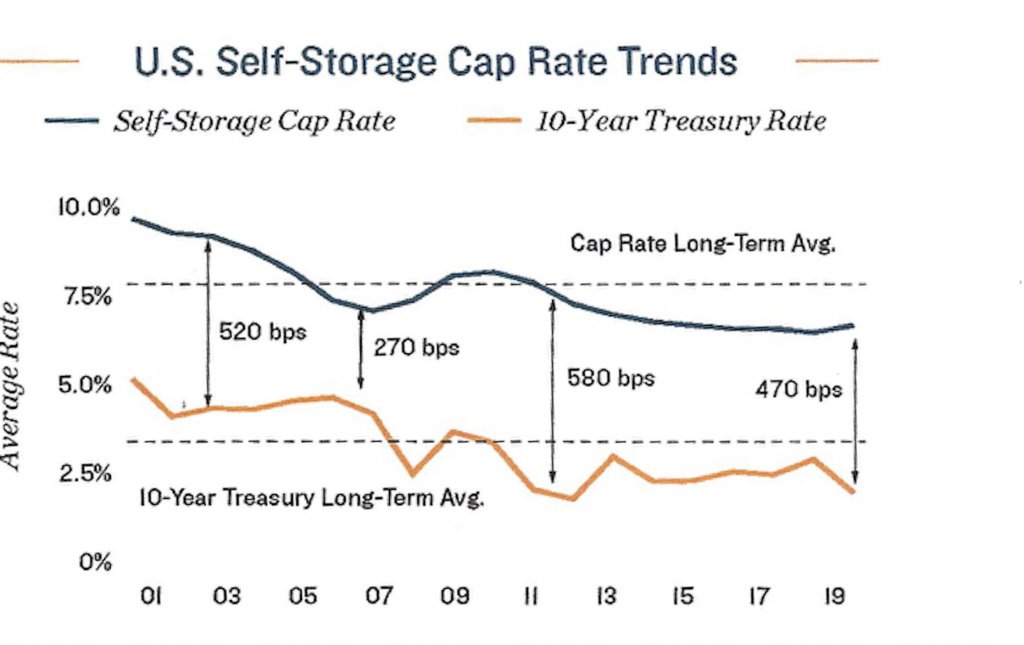As we have stated in the last few episodes, self storage appears to be positioned particularly well to perform better than other segments of the commercial real estate industry during COVID-19.
In a recent Marcus & Millichap Special Report (M & M), titled “Self-Storage Operations Among Least Challenging to Adapt to Social Distancing; New Demand to Emerge Under Reopening Strategies” appears to confirm that speculation.
What I found interesting in the article is an almost inverse chart showing self storage vacancy mapped over new construction supply.
Here is a sidebar comment. Now, the above graph shows vacancy only going up slightly as the amount of new product hits the market.
When I researched this, I found something interesting. It appears M & M only tracks stabilized facilities as they track vacancy numbers. So be aware that as you bring new product on, all of the other projects that may be in lease-up in your submarket are not included in M & M’s vacancy numbers.
The above chart also points to the fact that there is more of the population using self storage than in the earlier years. This is a trend, in my opinion, will only increase in the upcoming years.
Cares Act and SBA-PPP Loans Round Two
If you see this in early to mid-May, it is important if you are a self storage operator with employees to apply for a PPP (payment protection plan) forgivable loan.
In my opinion, one of the reasons self storage can do so well during this pandemic is because of these loans. It truly helps keep operations going and employees paid.
We have discussed in previous episodes how we are changing operations to reflect the new reality. We can do this because we are paying employees. Yes, our receivables do go up in downturns, but we have employees to work them and keep it in line.
And remember, state unemployment benefits were enhanced with an additional $600 per week from the federal government. This is designed to flow into the economy. We are clear that it especially means self storage rent.
So not only is the pandemic itself, generating more demand for our product, as most downturns do, there has never been more support financially for our industry than there is in this current crisis.
CAP Rates
It is hard to tell the future as far as CAP rates are concerning for the sale of existing self storage.
It appears as if the CAP rate line and the 10-year treasury average are beginning to move apart. I predict that CAP rates could rise between a half a percent to a full percent (100 basis points) over the next quarter or so.
This trend could be supported by slower lending. Some lenders are slowing down to see what happens (i.e., tighten up lending restrictions). This is especially true for smaller lenders, local lenders, especially ones that are not specialized or know as much about self storage.
Also, many lenders are jammed up with all of these temporary federal loans generated from the Cares Act.
But this is most likely a temporary situation.
CMBS loans are also starting to come back. So, for the next few months, it may be a great time to move into acquisition mode. Just try to have the due diligence periods be longer than they were previous to the pandemic.
Conclusion
One lesson I learned from reading all the data I can in order to guide our self storage company is that one has to be careful.
What I mean by that is to dig into how the data is put together. Although I am very bullish on self storage and have predicted a bright future, thinking the occupancy rates are 10% to 12% in your submarket or city could be very misleading.
Pricing also tells you a lot. If street rates are flat and operators are not offering a lot of incentives, odds are the market is in good shape today. However, if there are lots of incentives and street rates are going downward, be sure to check in to supply and not just rely on something like this M & M report.
Another reason for a feasibility report.
But even there, I am starting to question a lot more, particularly around population data. For the last year or so, I’ve seen a gap between demand population data predicts compared to observations on the street.
Then I realized that most population data used today is still based off the 2010 census data, extrapolated out.
It could be very different than that by now.
I will sure be glad when the 2020 census data compiles. But this rant is another episode.
My coaching is to begin to devise a strategy to get into self storage if you have been thinking about it. Now is the time. Approach it cautiously and with a sound strategy, but all indications are, self storage is the asset class to be in.





